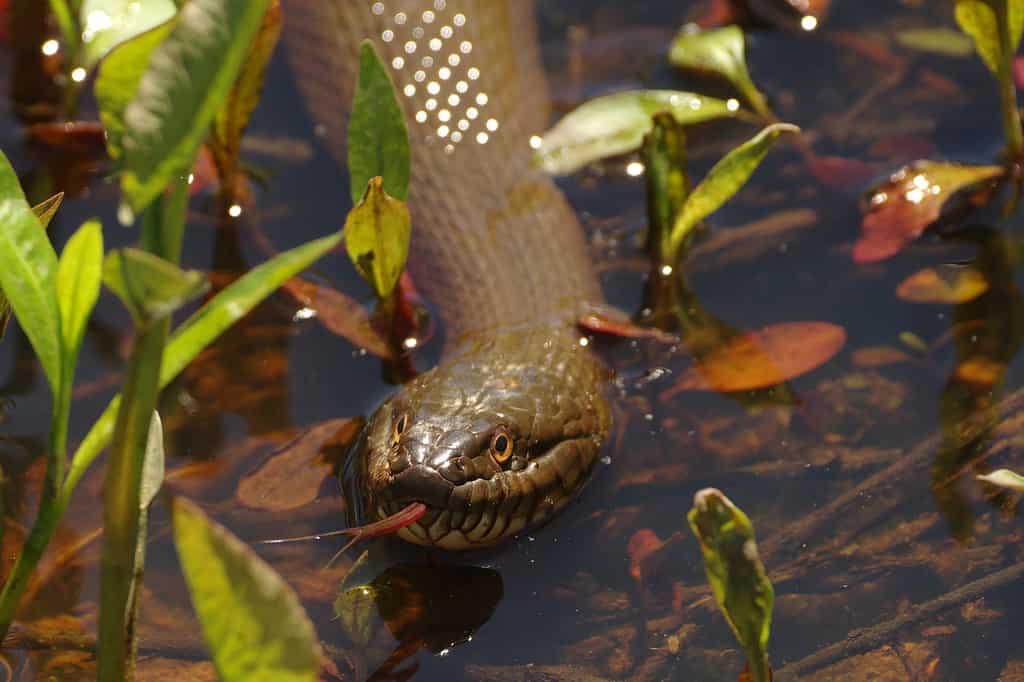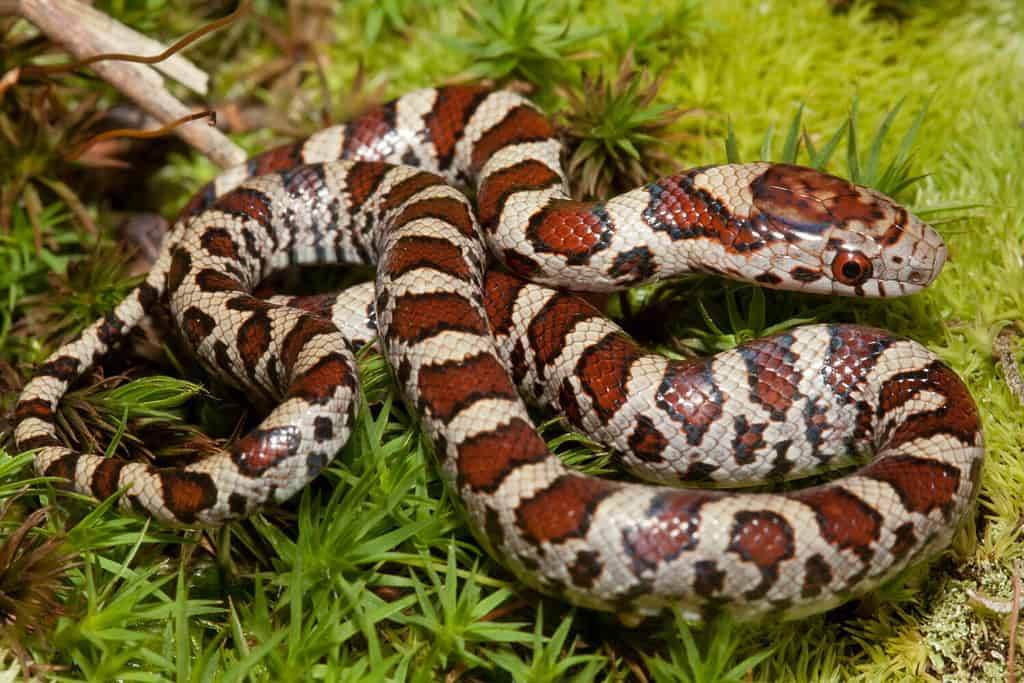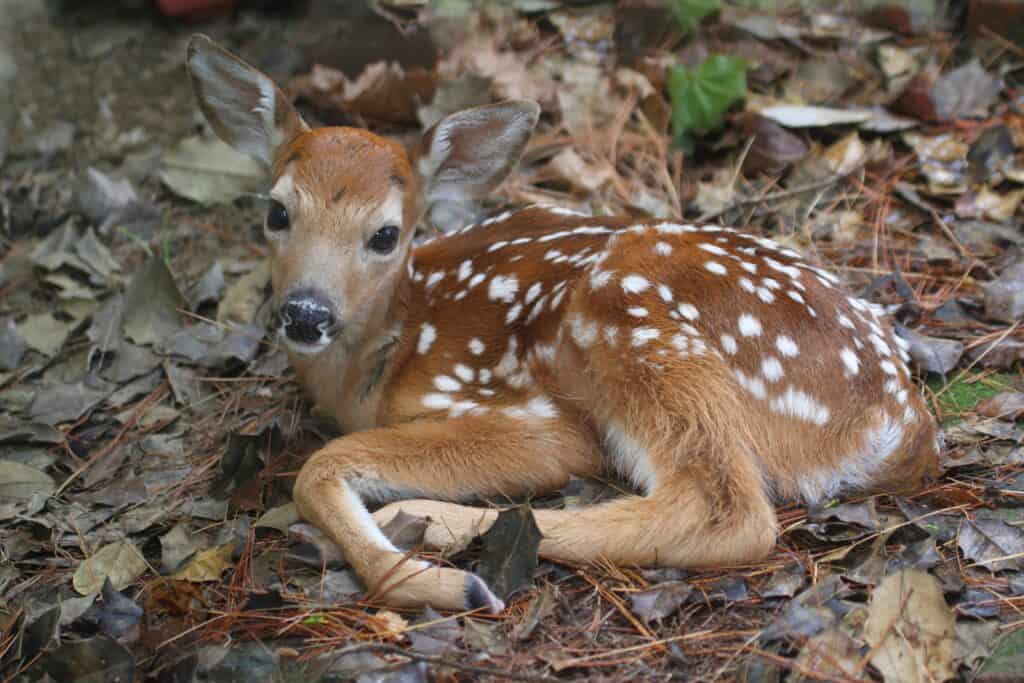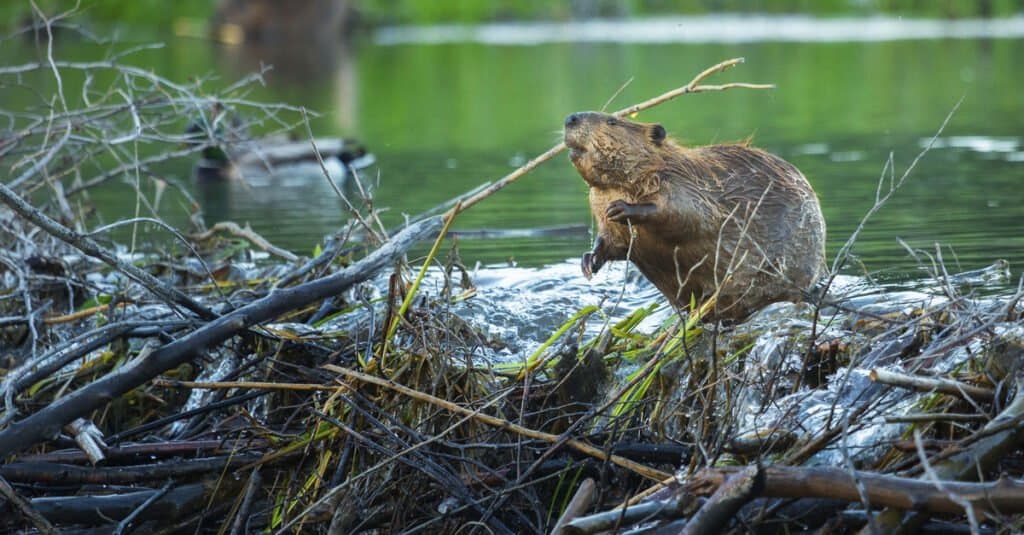Welcome to our journey to discover the most snake-infested lakes in Pennsylvania. In this article, we will be discussing some of the lakes located in Pennsylvania that are known for having a higher population of snakes. While snakes can often be seen as scary or dangerous creatures, it’s important to note that they play an important role in maintaining ecological balance within their habitats. However, for those who are planning on visiting these lakes or live nearby, it’s a good idea to learn the types of snakes you may come across and how to safely coexist with them. So join us as we dive into the world of snake-infested lakes in Pennsylvania and learn more about these fascinating reptiles.

Types of Water Snakes in Pennsylvania
Pennsylvania is home to six species of snakes that can be classified as at least aquatic or semi-aquatic. These snakes are the northern water snake, queensnake, northern rough greensnake, ribbonsnake, northern copperhead, and Kirtland’s snake. Each of these species has unique characteristics that allow them to thrive in their watery habitats.
The northern water snake is a non-venomous species with dark brown or black patterns on its body. It is often found near streams, ponds, and lakes, where it feeds on fish, frogs, and other aquatic prey. The northern rough greensnake also prefers wetlands but can also be found in wooded areas surrounding waterways, where it feeds mainly on insects.
The queensnake is a small species that typically live near freshwater sources such as rivers and creeks, where it hunts for crayfish and minnows. The ribbonsnake shares similar habitat preferences with the queensnake but also feed on other small animals like tadpoles.
The venomous northern copperhead is another semi-aquatic snake found in Pennsylvania’s wetlands. However, this species prefers drier upland areas as well. Its diet includes rodents and amphibians, along with smaller reptiles such as lizards.
Finally, there’s Kirtland’s snake, which may be one of Pennsylvania’s rarest snakes due to its limited distribution range throughout the state. This small non-venomous snake thrives in swampy regions feeding primarily on earthworms and slugs.
5 Snake-Infested Lakes in Pennsylvania
Most lakes in Pennsylvania have snakes, mostly because the northern watersnake is prevalent throughout the state and lives in nearly every body of water. Altogether, there are 21 types of snakes in Pennsylvania, so they are hard to avoid. Of these 21 snakes, only 3 are venomous.
Lake Wallenpaupack

A northern water snake (Nerodia sipedon) lives in nearly every lake in Pennsylvania.
©Philip Yabut/Shutterstock.com
Lake Wallenpaupack is a man-made lake located in the Pocono Mountains of Pennsylvania. It was created in 1926 by the Pennsylvania Power and Light Company for hydroelectric power generation purposes but has since become a popular recreational destination for fishing, boating, swimming, and other water activities. The lake spans over 5,700 acres with 52 miles of shoreline and an average depth of about 30 feet. Despite being one of the most snake-infested lakes in Pennsylvania (as noted by the Chester County Parks Department), Lake Wallenpaupack remains a favorite spot among locals and tourists alike for its picturesque scenery and abundant wildlife.
Lake Nockamixon

According to the Department of natural resources in PA, Eastern rat snakes are common at Lake Nockamixon.
©Psychotic Nature/Shutterstock.com
Lake Nockamixon is a popular destination for outdoor enthusiasts in Pennsylvania, renowned for its picturesque views and tranquil atmosphere. However, it also has a reputation as one of the most snake-infested bodies of water in the state. Despite this fact, visitors should not be alarmed as the snakes found here are typically non-venomous and pose no threat to humans.
The two most commonly spotted species of snakes at Lake Nockamixon are the northern water snake and black rat snakes (Pantherophis obsoletus). The northern water snake, also known as Nerodia sipedon, is a common aquatic serpent that can grow up to five feet long. They have dark brown or grayish-brown scales with dark blotches along their back and sides. Northern water snakes feed on fish, frogs, and other small aquatic creatures.
Black rat snakes are another prevalent species at Lake Nockamixon. These serpents can reach lengths of six feet or more and have shiny black scales with white bellies. As their name suggests, they primarily prey on rats but will also eat mice and other rodents.
While encountering these creatures may seem daunting to some visitors, they play an essential role in maintaining the balance of ecosystems within the lake’s surroundings. It is crucial to remember that these animals deserve respect and should never be harassed or harmed unnecessarily.
Beltzville Lake

Easter milksnakes live in Pennsylvania.
©Nathan A Shepard/Shutterstock.com
Beltzville Lake is a picturesque body of water in Pennsylvania that boasts an abundance of diverse snake species. Among the most commonly spotted snakes at Beltzville Lake are short-head garter snakes, which can be easily identified by their green and yellow stripes. These harmless reptiles typically feed on small insects and fish found in or near the lake.
Another prominent snake species found at Beltzville Lake is the northern watersnake, which tends to prefer rocky areas around the shoreline where it can bask in the sun. While these snakes may look intimidating with their thick bodies and dark coloring, they are also non-venomous and pose no threat to humans.
Eastern milksnakes are another type of snake you might encounter while visiting this lake. These beautiful creatures have distinctive red, black, and white bands along their bodies and are known for consuming small rodents like mice.
Finally, it’s worth noting that northern water snakes can be found virtually everywhere throughout Pennsylvania’s lakes – including those located near Beltzville Lake. As such, visitors should keep an eye out for these aquatic serpents as well!
Lake Erie

Lake Erie has a few different types of snakes.
©iStock.com/becky johnson
Lake Erie is a vast body of water that stretches across several states in the northeastern United States, including Pennsylvania. Despite its natural beauty and recreational opportunities, Lake Erie is also known for being home to a variety of snake species, some of which are more prevalent than others.
One such species is the Lake Erie watersnake (Nerodia sipedon insularum), which can only be found in this particular region of the country. This subspecies of northern watersnake is well adapted to living near bodies of water and feeds primarily on fish and amphibians.
In addition to the unique watersnakes found at Lake Erie, visitors may also encounter garter snakes, Northern brown snakes (Storeria dekayi), and Eastern milksnakes (Lampropeltis triangulum). These species all have their own distinctive characteristics and behaviors, making them fascinating subjects for amateur herpetologists or curious nature enthusiasts.
Of course, encountering snakes can be intimidating or even frightening for some people. However, it’s important to remember that these creatures play an essential role in maintaining ecological balance and should be respected as valuable members of our ecosystem. With proper education and awareness about snake behavior and safety precautions, visitors to Lake Erie can enjoy observing these fascinating animals without putting themselves or the snakes in danger.
Allegheny Reservoir

Timber
rattlesnakes
are one of 3 different venomous snakes in Pennsylvania.
©Tim Malek/Shutterstock.com
The Allegheny Reservoir in Pennsylvania is a popular natural attraction known for its abundance of snakes. Visitors to this beautiful lake are likely to encounter the timber rattlesnake and the northern watersnake, two species that are commonly found in the area. These snakes are fascinating creatures that play important roles within their ecosystem.
The timber rattlesnake, also known as Crotalus horridus, is a venomous snake with a distinctive rattle on its tail. This sound serves as a warning to potential predators and helps them avoid confrontation with these impressive reptiles. The timber rattlesnake can grow up to 6 feet long and has been known to live up to 30 years in captivity.
Another common sight near the Allegheny Reservoir is the northern watersnake or Nerodia sipedon. These non-venomous snakes can be easily identified by their dark brown or gray coloration with blotches of reddish-brown along their backs. They prefer aquatic habitats such as lakes and streams, where they hunt for fish and amphibians.
In addition to these two species, visitors should also be aware of the presence of another venomous snake: the northern copperhead (Agkistrodon contortrix mokasen). Although not as frequently seen as other species in this region, it’s important for visitors to exercise caution when exploring areas surrounding the reservoir.
Other Animals Near Lakes in Pennsylvania
Pennsylvania lakes are natural water sources for hundreds of different species of animals. Here are a few of our favorites!
White-Tailed Deer

White-tailed deer live all over Pennsylvania.
©Steve Byland/Shutterstock.com
The white-tailed deer (Odocoileus virginianus) is a medium-sized mammal native to North America. They are identifiable by their reddish-brown coat in the summer and grayish-brown fur in the winter, which helps them blend into their surroundings. White-tailed deer are herbivores, primarily feeding on leaves, twigs, fruits, acorns, and nuts.
In Pennsylvania specifically, white-tailed deer have been known to cluster around lakes and rivers for access to water sources. This behavior is not unique to Pennsylvania but rather common among deer populations across various regions. While they can survive without drinking water for extended periods of time by obtaining moisture from plants they consume or morning dew, having access to fresh water is crucial during hot summers or drought conditions.
White-tailed deer often prefer wooded areas near bodies of water as it provides cover from predators such as coyotes or bobcats while also offering easy access for drinking purposes. Additionally, these areas typically provide ample vegetation for food sources and shelter.
Overall, understanding the habits and preferences of white-tailed deer can be useful information when exploring snake-infested lakes in Pennsylvania, as knowing where these animals congregate may indicate potential risks or hazards nearby.
North American Beaver

Like humans, beavers cut down trees to build their homes.
©Chase Dekker/Shutterstock.com
A North American beaver is a semi-aquatic rodent native to North America. They are known for their distinct physical characteristics, including flat tails and large front teeth used for chewing through trees and building dams. Beavers play an important role in their ecosystem by creating wetlands that provide habitats for many other species of plants and animals. However, they can also cause damage to human infrastructure, such as roads and buildings, if they build dams too close to civilization. In Pennsylvania, beavers are common around lakes and rivers, where they create lodges made from mud and branches. While these creatures may seem harmless, it’s important to remember that they are wild animals and should never be approached or provoked.
Muskrat

Muskrats make their homes in Pennsylvania rivers and lakes.
©Anton MirMar/Shutterstock.com
A muskrat is a semi-aquatic rodent species that can be commonly found in wetlands, marshes, and lakes across North America. They are known for their distinctive appearance, with brown fur, webbed feet, and a long rat-like tail. Muskrats primarily feed on aquatic vegetation, such as cattails and other plants near the water’s edge. They also play an important ecological role by creating habitats for other wildlife through their construction of lodges or dens made from mud and plant materials. Despite being considered a nuisance for damaging crops or causing erosion in some areas, muskrats are valued as a food source and have been used for fur trapping in the past.
Osprey

An osprey feeds itself from fish that it finds in Pennsylvania rivers and lakes.
©Gregory Johnston/Shutterstock.com
An osprey is a large bird of prey that is commonly found near bodies of water, such as lakes and rivers. They are also known as fish eagles because they primarily feed on fish. Ospreys have distinctive features, including sharp talons for grasping prey and reversible outer toes that allow them to grip their food tightly while flying. They also have keen eyesight, which enables them to spot fish from high above the water’s surface before diving down to catch it with their powerful beaks. These birds are known for building large nests on top of tall structures, such as utility poles or trees near the water’s edge. The presence of ospreys in an area can indicate a healthy ecosystem with abundant fish populations, making them an important indicator species for conservation efforts.
Summary of 5 Snake-Infested Lakes in Pennsylvania
| Rank | Lake | Location |
|---|---|---|
| 1 | Lake Wallenpaupack | Pike/Wayne County, northeastern PA |
| 2 | Lake Nockamixon | Bucks County, southeastern PA |
| 3 | Beltzville Lake | Carbon County, southern foothills of the Pocono Mountains |
| 4 | Lake Erie | Erie County, northwestern PA |
| 5 | Allegheny Reservoir | spans the border between Pennsylvania and New York |
The photo featured at the top of this post is © Steve Byland/Shutterstock.com
Thank you for reading! Have some feedback for us? Contact the AZ Animals editorial team.






